California is home to a massive array of wildlife. Unfortunately, some of that wildlife is currently being threatened by invasive species. The vast majority of invasive species are the direct result of human interference (whether intentional or not), although some instances of natural migration do occur. Still, invasive species are a threat to native wildlife and can cause damage to entire ecosystems.
California keeps a running database of its most prominent invasive species. Today, we are going to break down their list of invasive species in California in some detail, learn a bit about these animals, and see the negative impact they are having in the region. Let’s discover 20 animals invading California!
Mammals
Nutria
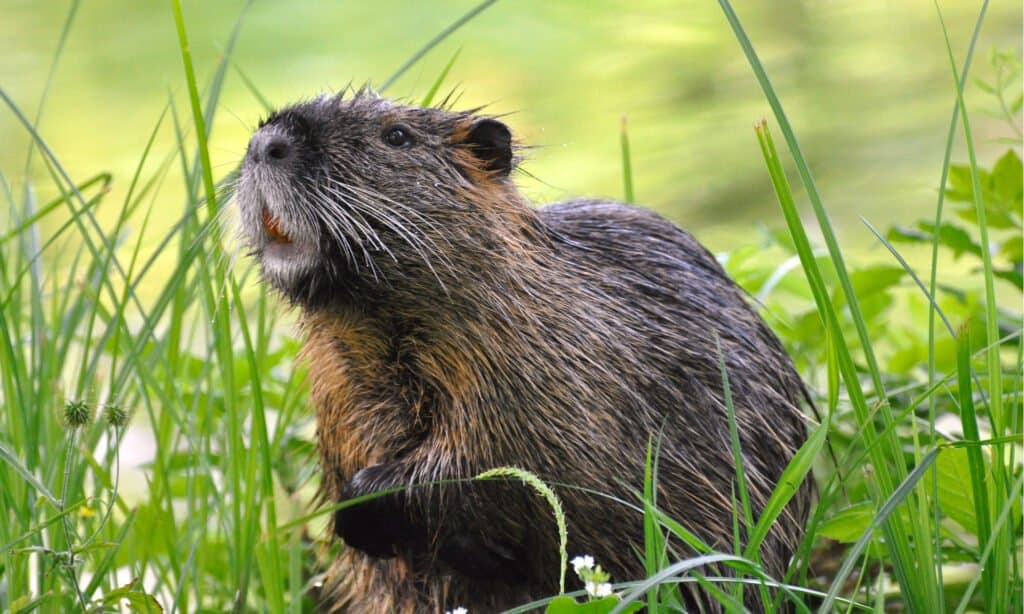
Nutrias are destructive rodents native to South America.
©Sonja Guijarro/Shutterstock.com
The nutria is a large rodent native to South America that closely resembles a beaver or muskrat. Currently, nutrias live in 30 states and were mostly introduced as a way to increase the revenue of the fur trade. As a result, nutrias are found on every continent besides Australia and Antarctica.
Nutria cause extensive environmental damage through burrowing, mass consumption of aquatic vegetation, flooding, and diseases. The most vulnerable places and animals at risk from nutria are wetland habitats and animals, livestock, and pets.
Birds
Mute swan
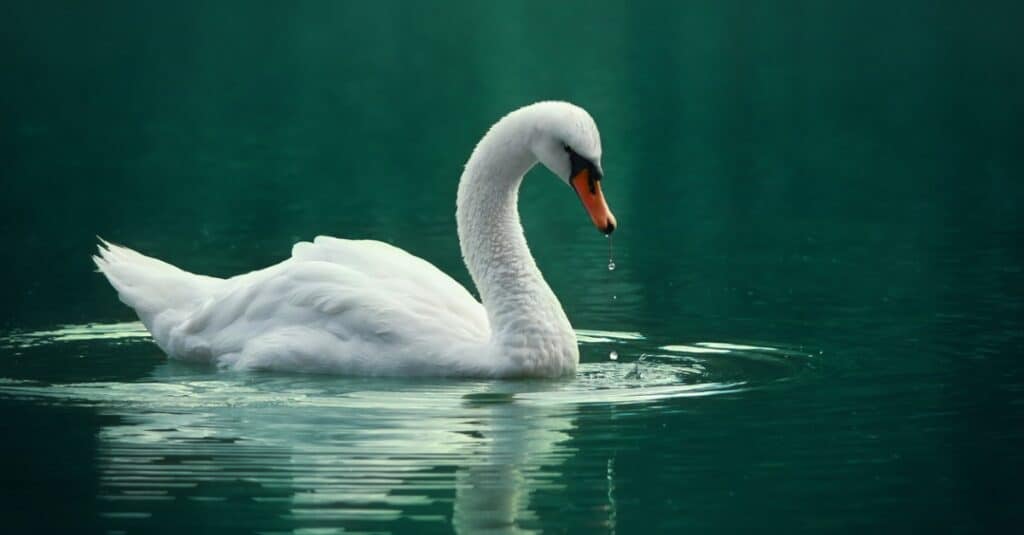
The mute swan is native to Eurasia but was brought over as pet.
©iStock.com/Arina_Bogachyova
Mute swans are large white swans with a distinct black mask. They are kept as pets in private residences but often escape and breed in the surrounding areas. Mute swans are native to Eurasia and were domesticated in the 12th century.
These birds consume 8 lbs of submerged aquatic growth, destroying habitat for native birds, fish, and invertebrates. Additionally, swans chase other birds out of native areas, occasionally killing them.
Brown-headed cowbird
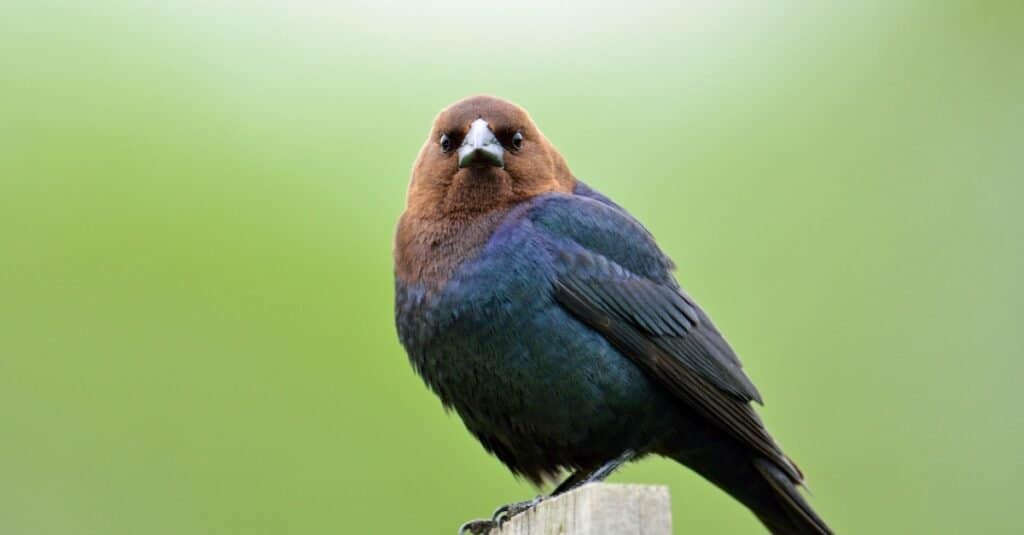
The brown-headed cowbird lays its eggs in other birds’ nests.
©iStock.com/BrianEKushner
The brown-headed cowbird is a member of the blackbird family and is famous for laying eggs in other nests in order to trick other birds into raising their chicks. These birds are native to the Great Plains region of the United States.
The brown-headed cowbird parasitizes over 220 species of native California birds, each laying up to 30 eggs per season. As a result, native birds end up raising the parasitic birds and neglecting their own chicks.
Reptiles
Watersnakes
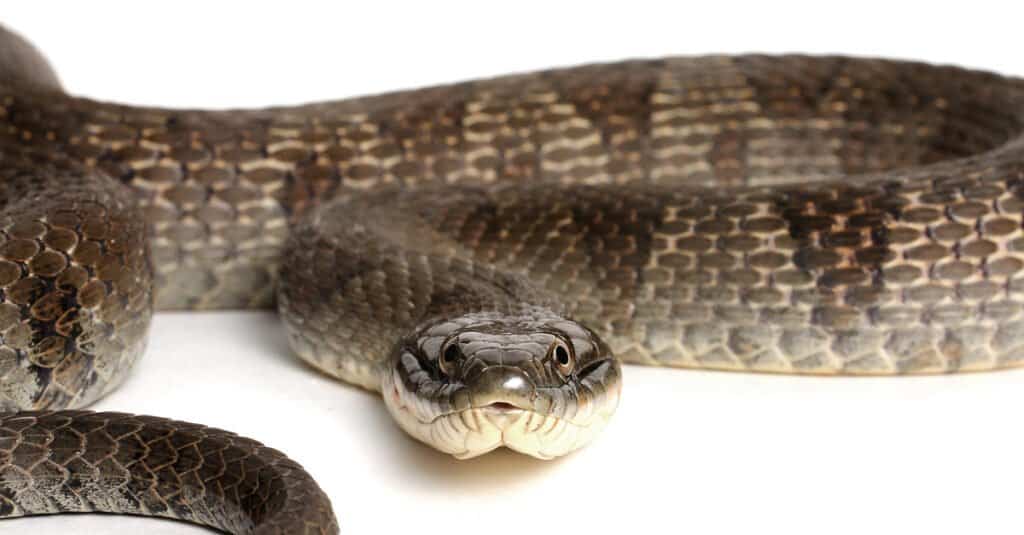
The southern and northern watersnake are both invasive to California.
©Michiel de Wit/Shutterstock.com
There are two species of watersnake that are invasive to California: the southern and the northern watersnake. Both are quite similar in appearance and impact but are distinct species. Additionally, both watersnake species are native to the eastern United States.
The impact of both spaces is related to their generalistic diets and ability to reproduce rapidly. Subsequently, they outproduce native reptiles and overfeed on native prey.
Red-eared slider
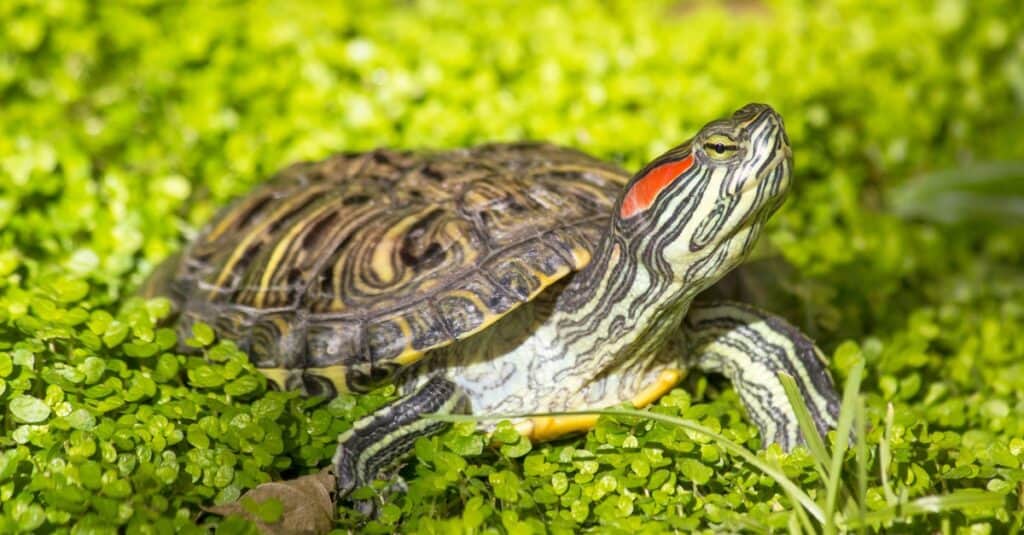
Red-eared sliders are on the list of the 100 worst invasive species in the world.
©xbrchx/Shutterstock.com
The red-eared slider is a freshwater turtle with two distinctive red stripes on the sides of its head. These turtles are native to the Mississippi Valley region to the Gulf of Mexico. They are well-known invasive species and are even listed as one of the top 100 worst invasive species in the world.
Red-eared sliders compete with native turtles for food and habitat. Additionally, they carry many parasites, particularly antibiotic-resistant strains of salmonella.
Amphibians
Common Coqui

Common coquis are extremely loud and reproduce rapidly.
©Jeremy A. Casado/Shutterstock.com
The common coqui is a small tree frog that is 1-2 inches in length as adults. These invasive frogs are usually introduced via the pet trade and are native to countries outside the United States.
The common coqui rapidly spreads, as seen by the 22,000 frogs per acre that are currently present in Hawaii. Additionally, they are extremely noisy and can reach noise levels as high as 80-90 decibels. They also outcompete native birds due to their insect-eating habits.
American bullfrog
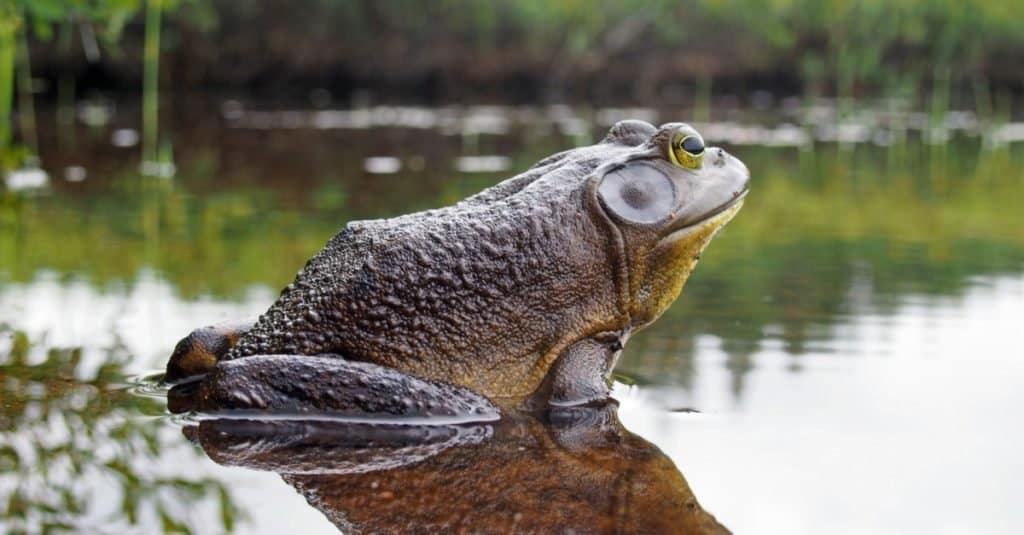
North American bullfrog has a bellowing call that sounds a bit like a foghorn.
©Christian Ouellet/Shutterstock.com
The American bullfrog is a large frog with mottled green and brown skin. These frogs are native to the central and eastern United States but have since spread to the west.
American bullfrogs were introduced by escaping the pet trade, laboratories, and farming operations. These frogs eat anything they can fit in their mouths, including birds, rodents, other frogs, lizards, and snakes, threatening other wildlife species. Additionally, they carry chytrid fungus, a dangerous fungus that causes chytridiomycosis.
African clawed frog

African clawed frogs excrete toxic chemicals from their skin.
©TimVickers / Public domain – License
The African clawed frog is a mottled brown and green frog with sharp claws located on its back toes. This frog is native to sub-Saharan Africa and was originally brought to the United States as a laboratory species and as a pet.
Like the American bullfrog, the African clawed frog eats anything it can catch. These frogs have been responsible for the extinction of over 100 amphibian species across the world since the 1970s. Additionally, they outcompete other animals for food, carry the chytrid fungus, and excrete toxic skin substances that potential predators are harmed by.
Fish
Currently, only one species of invasive freshwater fish is present in California. There is, however, a history of 8 separate invasive species that are documented. Other species include:
Grass carp

Grass carps are released in canals to reduce algae, but they are supposed to be sterile.
©Rostislav Stefanek/Shutterstock.com
The grass carp is a common freshwater fish that are often stocked in canals and ponds across the country. In California, private stocking licenses do exist, although the stocking fish are bred to be sterile. Still, fertile groups are still occasionally released and subsequently spread. Grass carp was originally introduced to the United States in the 1960s and have since been reported in 45 states.
The grass carp eat a massive amount of aquatic vegetation and alters or destroy native habitats. Additionally, the fish disturb bottom sediment and muddy water. As a result, oxygen levels drop and further farm fish.
Invertebrates
Chinese mitten crab
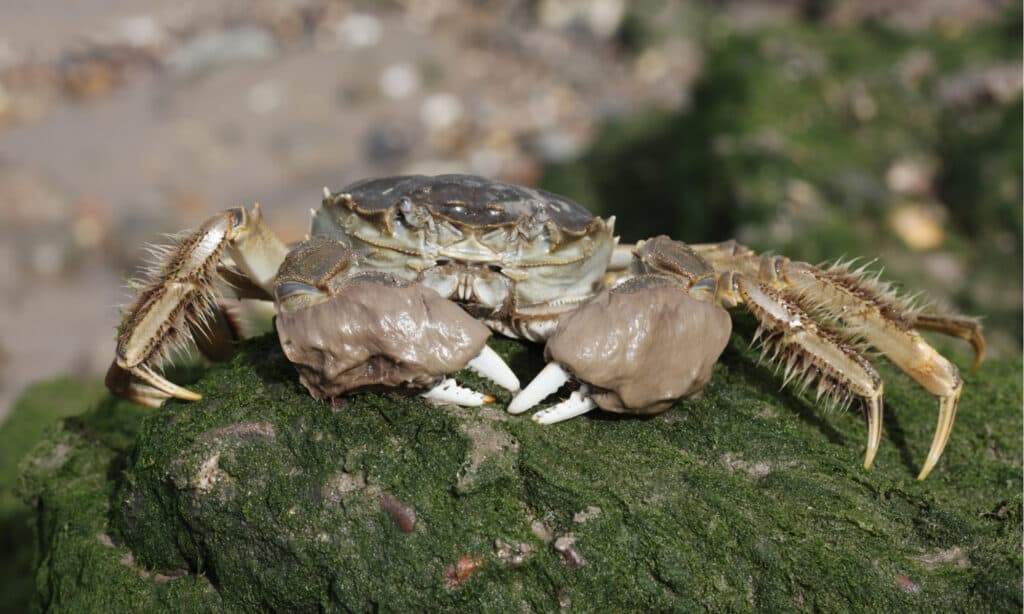
Chinese mitten crabs have small, hairy claws.
©Erni/Shutterstock.com
The Chinese mitten crabs are medium-sized crabs that have small, hairy claws, thereby giving them their name. These crabs are native to Chinese and South Korea’s river systems that drain into the Yellow Sea.
The Chinese mitten crabs are extremely prevalent in the Bay Area but are also an invasive species in other regions of the country. These burrowing crabs cause damage to dikes, levees, and banks, speeding up the process of erosion. Additionally, they clog water structures, steal bait, and damage fishing nets. Native invertebrates like crayfish and fish (particularly fish eggs) are damaged by these crabs.
Polyphagous and Kuroshio shot hole borers
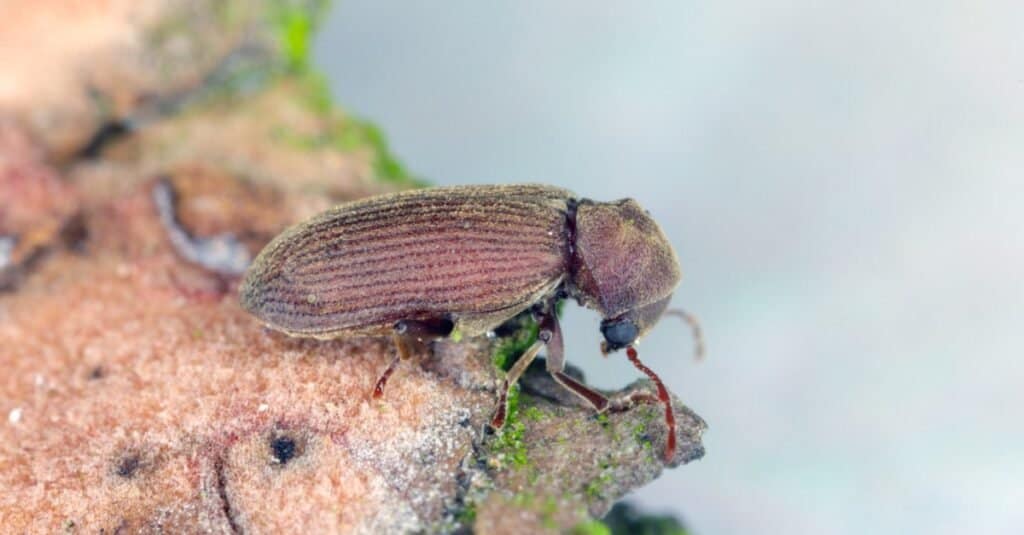
Wood boring beetles damage trees and spread disease and fungus between them.
©Tomasz Klejdysz/Shutterstock.com
The Polyphagous and Kuroshio shot hole borrowers are two similar species of beetle that bore into trees. These beetles are native to Southeast Asia but have since made it to America. The nature of these beetles makes them one of the most dangerous invasive species in California.
The Polyphagous and Kuroshio shot hole borrowers dig holes into trees, causing severe damage and spreading Fusarium dieback. The problem posed by these beetles is immense, and they threaten native trees and crops such as avocados.
Channeled apple snail
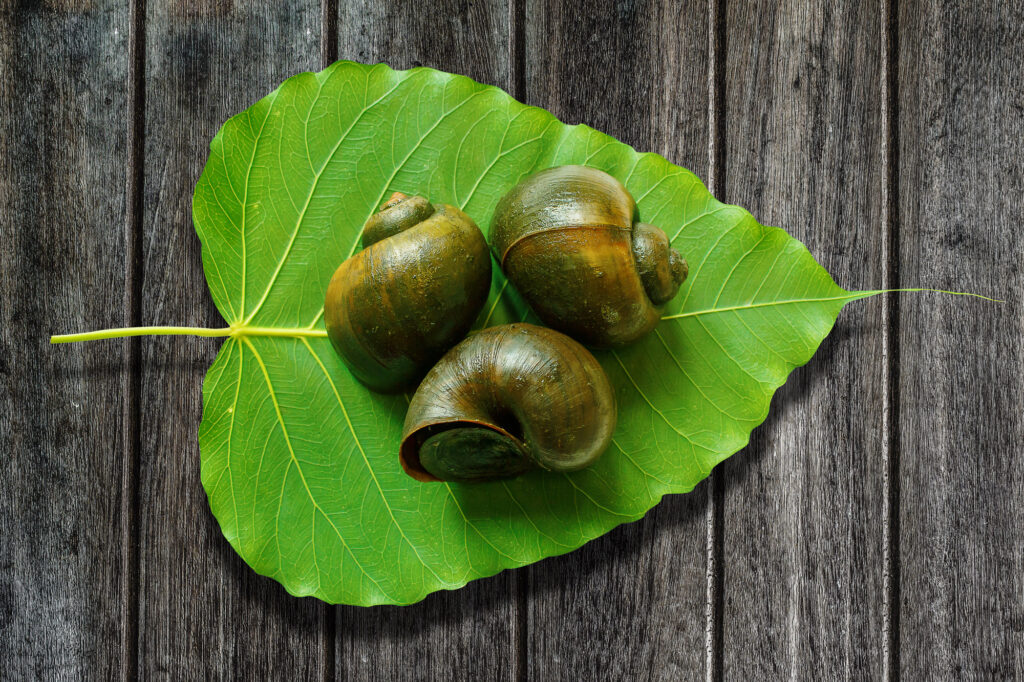
Apple snails breathe through both lungs and gills.
©Jiffy Avril/Shutterstock.com
The channeled apple snail are freshwater snails that grow up to 3 inches long. These snails can breathe on land and in water and lay masses of eggs, sometimes up to 600 at a time. The channeled apple snail is native to the Amazon Basin and was introduced around the world as a potential food source (particularly in Asia).
These snails eat aquatic vegetation and have since become agricultural pests, especially rice. Additionally, apple snails carry rat lungworms and are known to infect humans, causing a lethal form of meningitis.
New Zealand mudsnail

A single New Zealand mudsnail can produce 2.7 billion offspring in 4 years.
©iStock.com/Heather Broccard-Bell
The New Zealand mudsnail is a tiny aquatic snail that only grows to 4-6 mm at maximum. This snail reproduces incredibly fast, with a single female able to produce over 2.7 billion snails over the course of 4 years.
By way of their insane reproduction rate, these snails have reached population densities of over 0.75 million snails per square meter. As a result, these snails consume half of the potential resources in a stream or river, threatening native insects, fish, and aquatic life. Additionally, many fish can’t digest these snails as they pass through the digestive system untouched. In some places, this leads to the starvation of fish that are still actively feeding.
The photo featured at the top of this post is © Alberto Loyo/Shutterstock.com
Thank you for reading! Have some feedback for us? Contact the AZ Animals editorial team.






